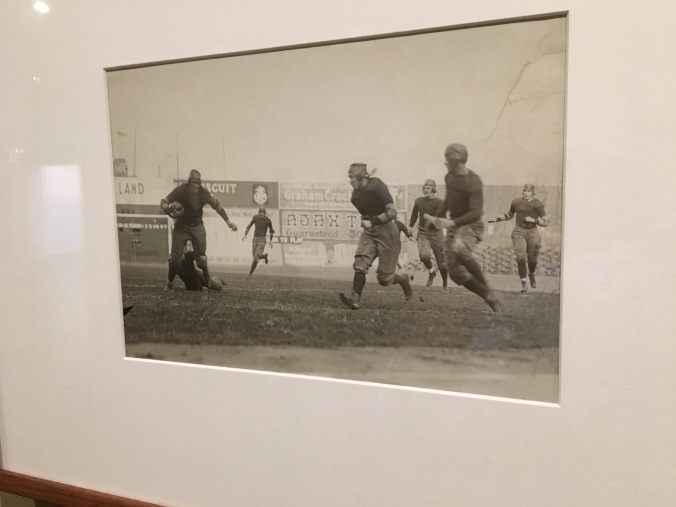Wadsworth Museum, and its contents, is an important piece of history nestled in the city of Hartford. While I have been a student at Loomis for a year and a half now, I had never heard of it and was completely unaware of its importance in exposing firsthand accounts and expressions of what we have been learning in class. Nevertheless, the museum and the Amistad Center opened my eyes to a tangible dimension of learning about the history of African American culture. It also allowed me to reflect on the hundreds of years of struggle the African American population faced in order to achieve, and in some cases-not yet achieve, equality in American society.
In the first portion of the gallery, abstract art was displayed. While these famous pieces of art which depicted amazing flowing colours, demented shapes, and subtle figures conveyed a lot of meaning for me after close inspection, I had never spent too much time connecting with the underlying meaning of the painting rather than the painting itself. It took much prompting by Mr. Zavisza and my classmates for me to be able to truly excavate a narrative out of something as complex as these paintings.
Instead, I preferred the second room of the gallery. An exhibit focused on photography, which to me was more digestible as it presented important figures in a relatable manner. Instead of asking myself, “what was the artist thinking when depicting these people?” I thought, “what are the people depicted thinking?” The pictures ranged widely by style; some were candid, others portrait, and even landscape. But, they all captured African American development in American society, which speaks to the intended narrative of the pieces: while many avenues were taken in which African Americans fought for equality and a place in American Society, in every one there was hardship and life’s worth of effort focused on succeeding in that singular avenue. For instance, I understand that many civil rights activists took to the political world to express their dissatisfaction with their rights. Others took to the stage and played poetic gospel and passionate jazz music. And still others became well known athletes that broke stereotypes and became the role model for African Americans everywhere. Regardless, though, of the route they each took, they all spent their life’s effort to succeed and move the needle forward for African Americans as a whole. This exhibition perfectly portrayed this idea as it’s eclectic pieces provoked a deep respect in me for the struggle of African Americans in US history.
On this note, the piece I chose to highlight was picture of Paul Robeson while he played football at Rutgers University. A successful singer, actor, athlete, and political activist. A man that attempted every path of life and succeeded in them all, not just for himself but for the civil rights movement as a whole.
